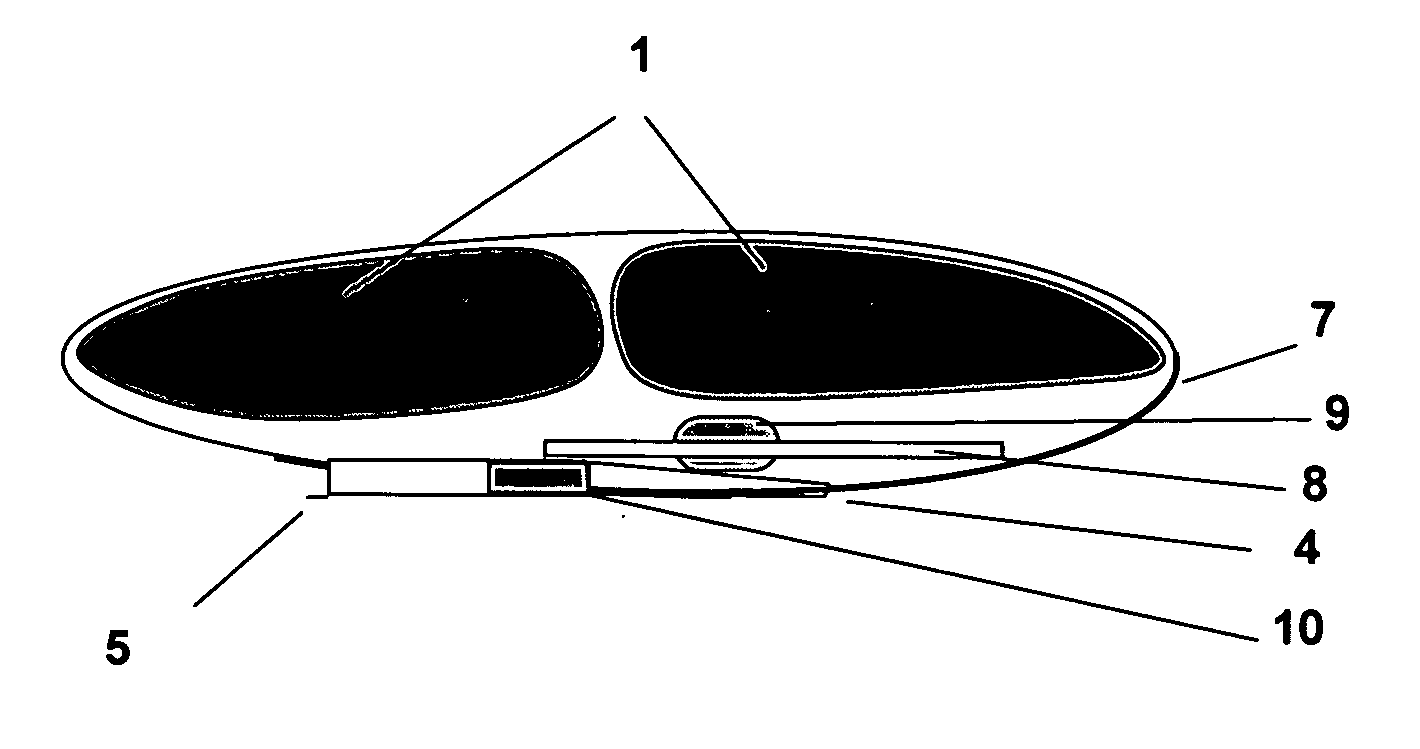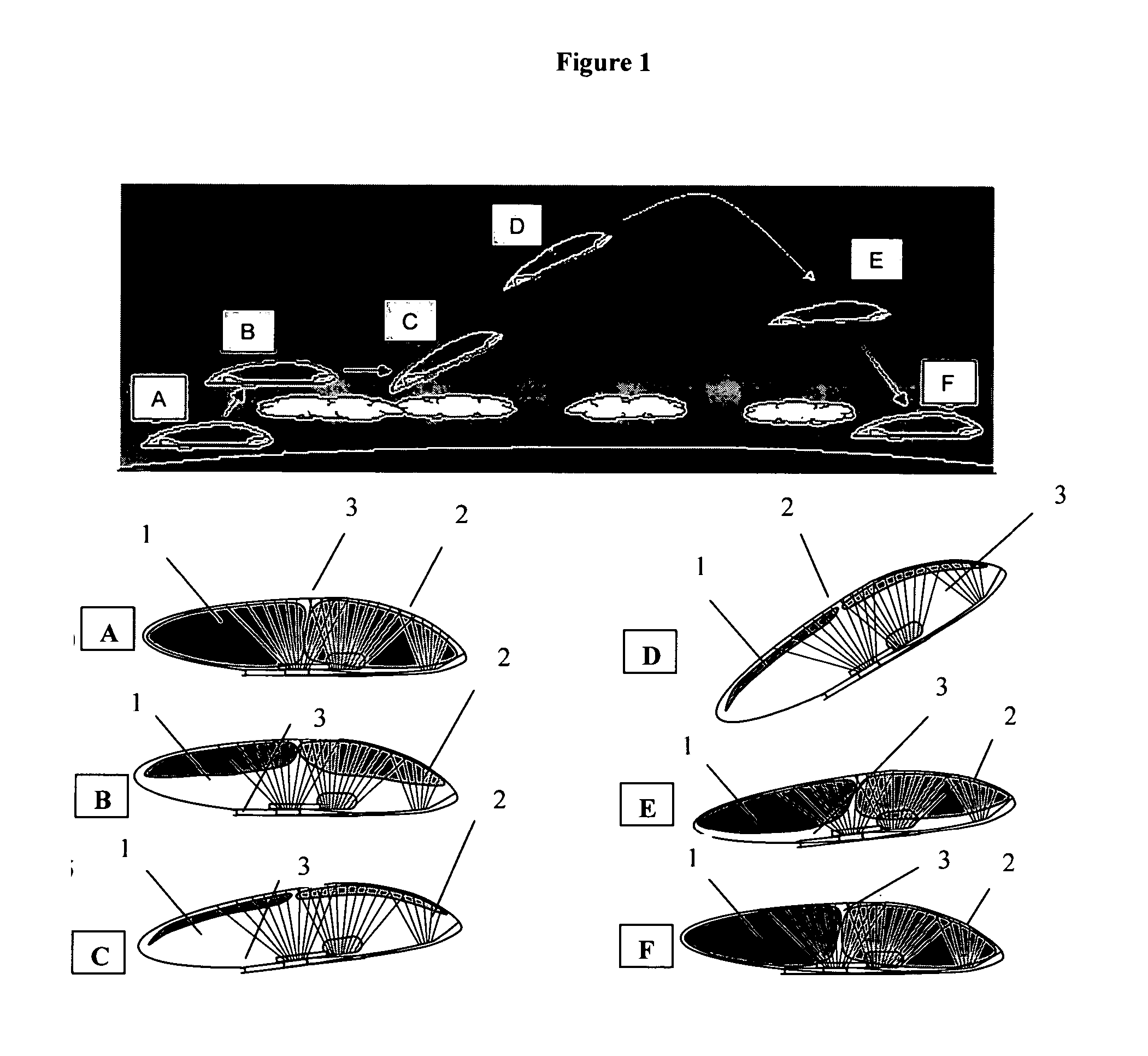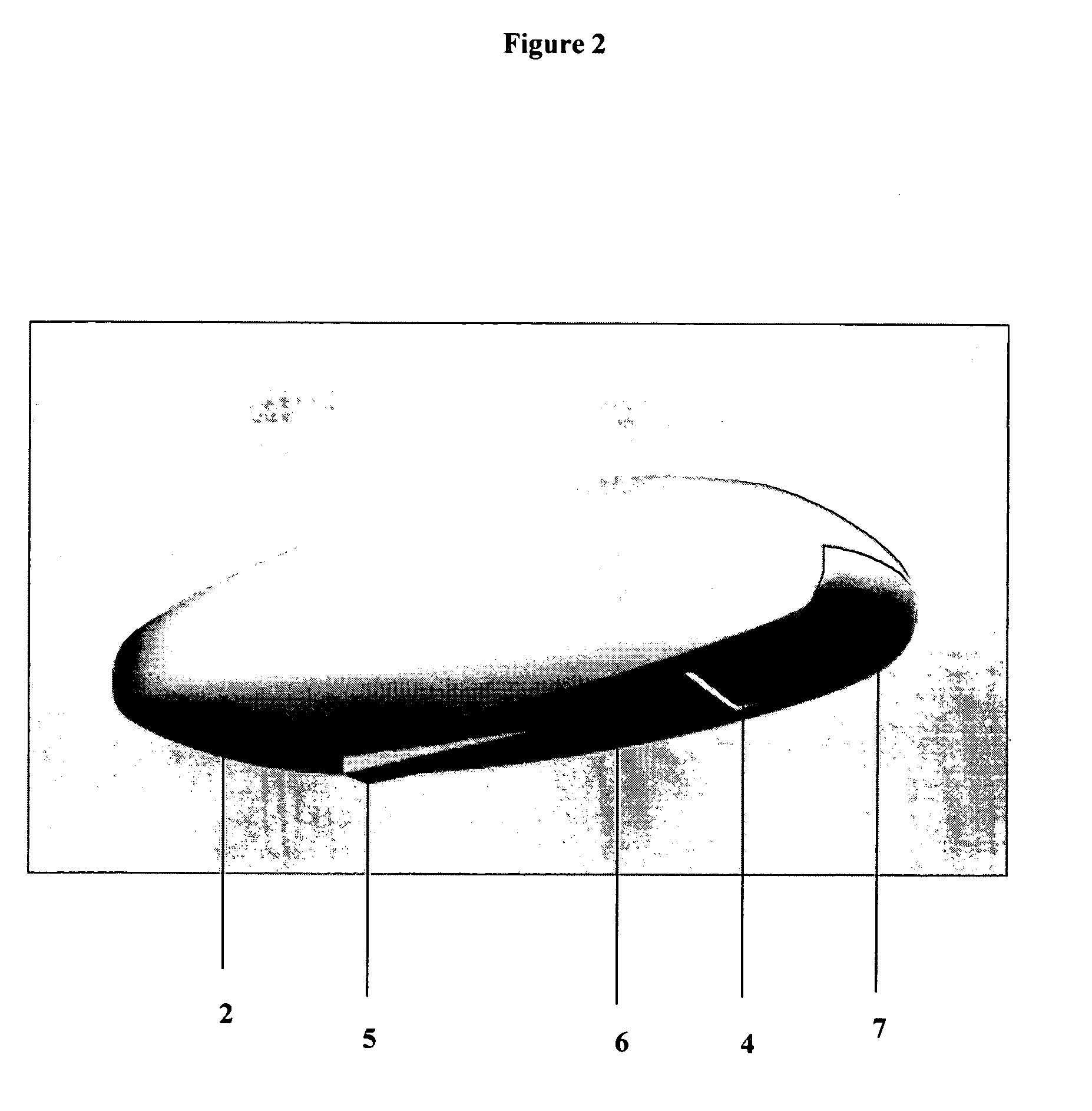Flight/launch vehicle and method using internally stored air for air-breathing engines
a technology of air-breathing engines and internal storage, which is applied in the field of vehicles, can solve the problems of not fully buoyant, not disclosed or suggested by the provitola patents, and the storage of air to operate the jet engine in vacuum or near vacuum environment, and achieves the maximum recoverable launch value, unlimited scale-up capacity, and high safety margin
- Summary
- Abstract
- Description
- Claims
- Application Information
AI Technical Summary
Benefits of technology
Problems solved by technology
Method used
Image
Examples
Embodiment Construction
[0025] The Air-Breathing Lung Reusable Launch Vehicle (ABL-RLV) can be described as a type of modified airship that is capable of transitioning from lighter than air flight to aerodynamic lift flight and ballistic flight. The craft need not, however, be buoyant in all embodiments and, in some embodiments, may be heavier than air at all times and use lifting body forces for flight while in the atmosphere. The exterior skin of the craft forms a flexible air envelope in the shape of a lifting body and forward motion of the craft can be used for ascent even at sea level. The embodiments described in the figures involve the use of lifting gasses for buoyancy to illustrate advantages such as independence from large runways or other launch facilities.
[0026] The ABL-RLV represents a novel form of flight hardware made possible in part by the realizations that: 1) the large volume of an airship can be used to store air that can be used by air breathing engines above the atmosphere, 2) the la...
PUM
 Login to View More
Login to View More Abstract
Description
Claims
Application Information
 Login to View More
Login to View More - R&D
- Intellectual Property
- Life Sciences
- Materials
- Tech Scout
- Unparalleled Data Quality
- Higher Quality Content
- 60% Fewer Hallucinations
Browse by: Latest US Patents, China's latest patents, Technical Efficacy Thesaurus, Application Domain, Technology Topic, Popular Technical Reports.
© 2025 PatSnap. All rights reserved.Legal|Privacy policy|Modern Slavery Act Transparency Statement|Sitemap|About US| Contact US: help@patsnap.com



